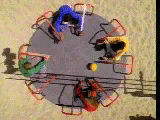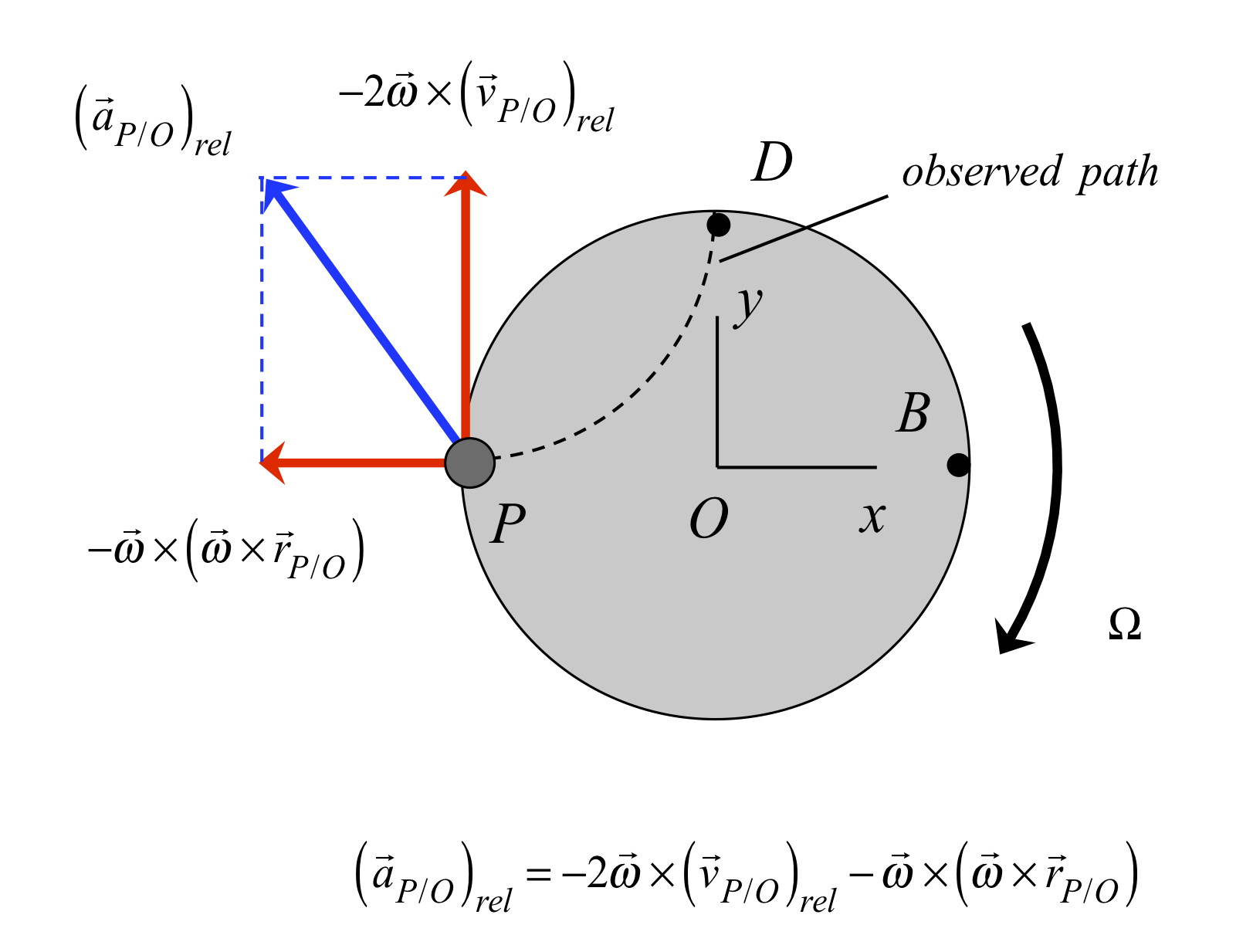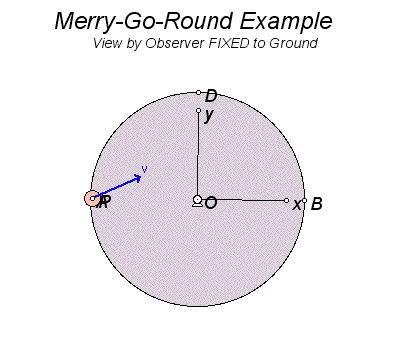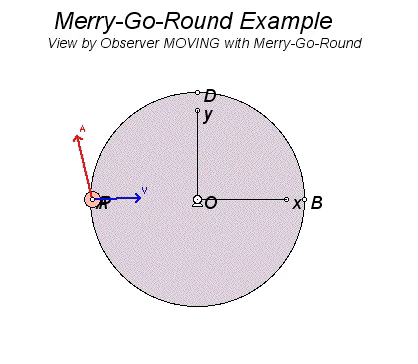The video below shows four future ME 274 students playing on a merry-go-round with a ball. The video is split between two views: one from a stationary observer looking down from above, and the other from a rotating observer on the merry-go-round. The stationary observer sees a straight path. The moving observer sees a curved path. Why is that? What influences the shape of this path?

Analysis
Provided is a solution video for this problem, showing the influence of the Coriolis component of acceleration on the moving reference from observation of the ball. Click here to watch.
Results
As shown in the analysis, a ball pushed directly toward the center of the merry-go-round will appear to have an acceleration to the left. This will produced a perceived curved path of the ball for people riding along on the merry-go-round.

Simulation
The simulations below allow us to compare and contrast the view of the path of the ball as seen by a stationary observer, with the ball's path as seen by a person riding on the (rotating) reference frame of the merry-go-round. These observations agree with those initially seen by the videos of the children playing.
|
Stationary observer
|
Rotating observer
|

